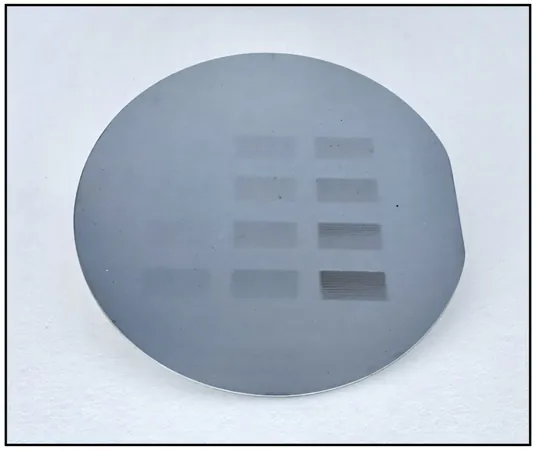
Revolutionizing Microchip Technology: Scientists Unveil Game-Changing Technique for Tinier Circuits
2025-09-11
Author: Wei
Invisible Innovations in Microchips
In a groundbreaking development, researchers at Johns Hopkins University have unveiled a revolutionary process that could dramatically reduce the size of microchips beyond current technological limits. This innovation promises to enhance the performance of modern electronics, impacting everything from smartphones to automobiles.
Creating the Unseen
The team's research reveals a method of fabricating circuits so minuscule they cannot be seen with the naked eye. Their findings, detailed in the esteemed journal *Nature Chemical Engineering*, represent a significant leap towards more efficient, compact, and cost-effective microchip production.
Solving the Miniaturization Puzzle
According to Michael Tsapatsis, a key researcher and Bloomberg Distinguished Professor of chemical and biomolecular engineering, the quest for smaller microchips has faced hurdles. Companies envision a future where chip technology continues to evolve, but achieving that vision required a new production method capable of using powerful radiation efficiently.
Harnessing Advanced Materials
The advanced lasers necessary for engraving these tiny circuits already exist. The challenge lay in discovering new materials that could withstand an emerging technique known as 'beyond extreme ultraviolet radiation' (B-EUV). Traditional materials have struggled to perform under these intense conditions, but Tsapatsis's lab, in collaboration with other prestigious institutions, has identified a new class of metal-organic resists that can absorb B-EUV light and facilitate the intricate chemical reactions needed to sculpt microchips.
A New Methodology: Chemical Liquid Deposition (CLD)
This research has introduced a novel approach called chemical liquid deposition (CLD), which allows for the precise coating of silicon wafers. By combining different metals with organic compounds, the team has devised a way to enhance the light absorption and chemical responsiveness of their materials. This versatility can result in the creation of numerous innovative metal-organic combinations.
The Future of Microchip Production
The researchers are currently testing various combinations specifically for B-EUV radiation, anticipating that this technique will become instrumental in manufacturing microchips within the next decade. The possibility of utilizing at least ten different metals and hundreds of organic materials opens the door to groundbreaking advancements in the microchip industry.
With this transformative research, the next generation of microchips could be faster, smaller, and more efficient, marking a monumental shift in technology’s landscape.


 Brasil (PT)
Brasil (PT)
 Canada (EN)
Canada (EN)
 Chile (ES)
Chile (ES)
 Česko (CS)
Česko (CS)
 대한민국 (KO)
대한민국 (KO)
 España (ES)
España (ES)
 France (FR)
France (FR)
 Hong Kong (EN)
Hong Kong (EN)
 Italia (IT)
Italia (IT)
 日本 (JA)
日本 (JA)
 Magyarország (HU)
Magyarország (HU)
 Norge (NO)
Norge (NO)
 Polska (PL)
Polska (PL)
 Schweiz (DE)
Schweiz (DE)
 Singapore (EN)
Singapore (EN)
 Sverige (SV)
Sverige (SV)
 Suomi (FI)
Suomi (FI)
 Türkiye (TR)
Türkiye (TR)
 الإمارات العربية المتحدة (AR)
الإمارات العربية المتحدة (AR)